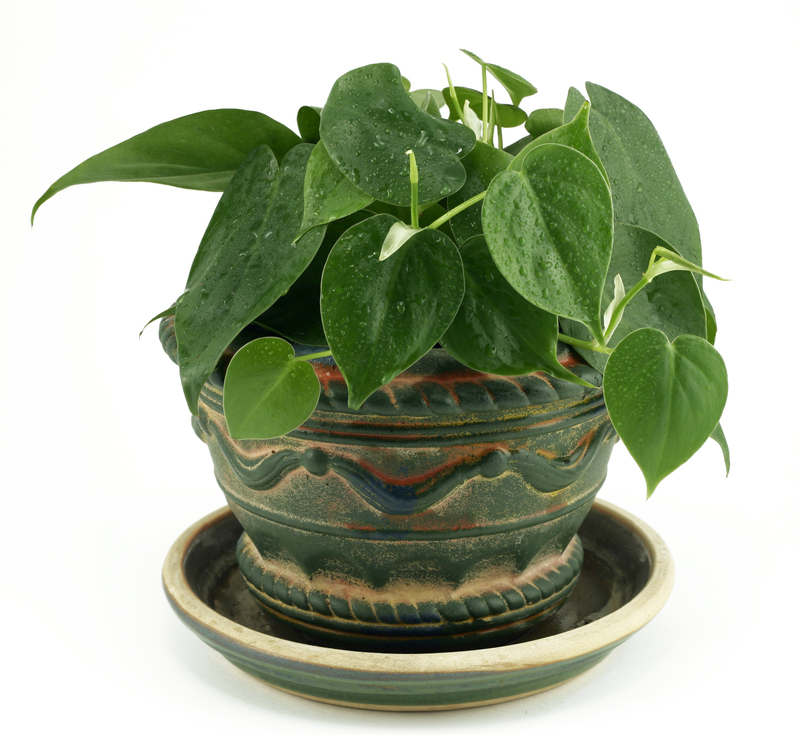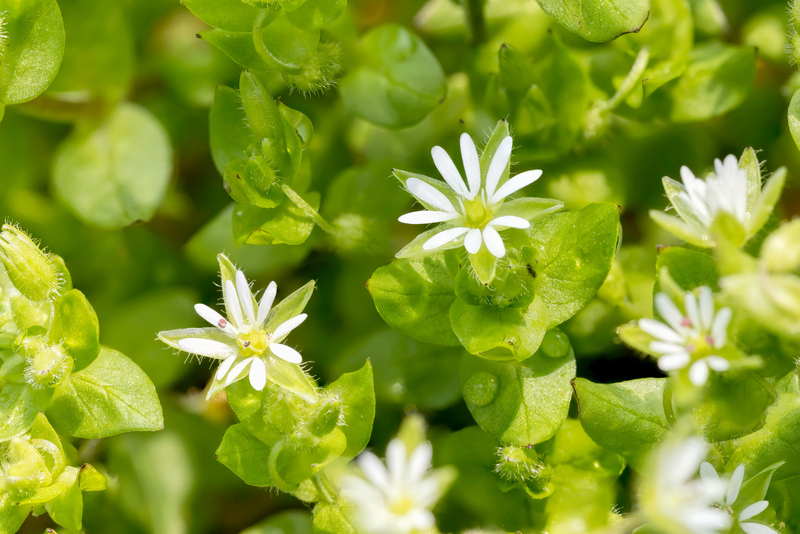From seed to bloom: 9 beginner gardening tips you need
Posted on 10/06/2025
From Seed to Bloom: 9 Beginner Gardening Tips You Need
Are you dreaming of a lush, colorful garden but not sure where to begin? Gardening can seem intimidating for first-timers. However, with the right knowledge and preparation, anyone can transform a bare patch of earth into a vibrant paradise. Whether you have a tiny balcony or a sprawling backyard, cultivating plants is a rewarding experience that benefits your mind, body, and environment.
In this comprehensive guide, we'll walk you through nine essential gardening tips for beginners. From sowing seeds to watching your garden burst into bloom, these expert-approved steps will simplify your journey and help you grow with confidence.
Why Gardening is the Ultimate DIY
Gardening is more than a hobby--it's a lifestyle shift that impacts your health, well-being, and the planet. Numerous studies have shown spending time with plants reduces stress, promotes happiness, and encourages physical activity. Plus, cultivating your own flowers or vegetables can lead to a more sustainable lifestyle.
- Mental Health Boost: Digging, planting, and nurturing promote mindfulness.
- Physical Exercise: Gardening is low-impact but keeps you moving and active.
- Eco-Friendly: Planting native species supports biodiversity and pollinators.
Ready to embark on your gardening adventure? Let's start with the nine must-know beginner gardening techniques that will help you nurture your plants from seed to bloom.

9 Beginner Gardening Tips You Need
1. Choose the Right Garden Location
The foundation of successful gardening is location. Before sowing a single seed, observe your available space. Does it receive enough sunlight? Is it near a water source? Some plants thrive in full sunlight, while others prefer partial shade.
- Sunlight Requirements: Most vegetables and flowers need 6-8 hours of sunlight daily.
- Accessibility: Locate your garden where you can easily water, prune, and harvest.
- Protection: Find a spot shielded from strong winds and foot traffic.
*Tip*: Place a bench or chair nearby to encourage regular visits--plenty of gardeners find joy in simply observing their plants grow.
2. Start with the Right Soil
Great gardens grow from great soil. Quality soil is the lifeblood of any successful planting project. Take time to evaluate your existing soil and, if necessary, amend it to support robust growth.
- Test Your Soil: Home kits or local extension offices can measure pH and nutrient levels.
- Enrich with Organic Matter: Mix in compost, aged manure, or leaf mold. This improves texture and supplies nutrients.
- Good Drainage: Ensure water doesn't pool--most plants dislike soggy roots.
Struggling with poor soil? Consider gardening in raised beds or large containers, allowing you to control the planting mix from seed to bloom.
3. Select the Best Plants for Beginners
Not all plants are created equal--some species are easier for novices. Begin your garden with varieties known for resilience and low maintenance.
- Vegetables: Radishes, lettuce, cherry tomatoes, peas, and bush beans.
- Flowers: Marigolds, sunflowers, pansies, nasturtium, and zinnias.
- Herbs: Basil, mint, parsley, and chives.
Pick local or native plants when possible; these are naturally adapted to your climate and soil, making your garden more sustainable and lower-maintenance.
4. Understand Your Zone and Timing
Timing is everything in gardening. Research your USDA Plant Hardiness Zone (or the equivalent for your region) to know what and when to plant.
- Check frost dates: Plant only after the last frost in spring, and harvest before first frost in fall.
- Read seed packets: They provide sowing and transplanting timelines.
- Succession planting: Stagger planting times for continual blooms and harvests.
This ensures your garden thrives throughout the growing season, maximizing both beauty and yield.
5. Master the Art of Sowing Seeds
From seed to bloom, the journey begins with proper sowing. Read all instructions on seed packets carefully--depth, spacing, and watering routines vary by plant.
- Sow seeds at the right depth: Typically, plant seeds 2-3 times as deep as they are wide.
- Spacing matters: Avoid overcrowding to allow light and airflow.
- Gentle watering: Use a fine spray to moisten soil without washing away seeds.
If you're new to gardening, start seeds in seedling trays indoors for a head start, then gradually transition them outdoors (a process known as "hardening off").
6. Perfect Your Watering Routine
The most common mistake beginners make is over or under-watering. Plants require regular moisture, but soggy roots can spell disaster.
- Morning is best: Water early to allow leaves to dry, preventing disease.
- Deep, infrequent watering: Encourages roots to grow downwards in search of moisture.
- Mulch helps: A layer of mulch retains soil moisture and regulates temperature.
Use your finger to test soil moisture: if the top inch is dry, it's time to water. Consistency is the key to flourishing plants from seed to bloom.
7. Feed Your Plants Wisely
From the tiny seedling stage to riotous flowering, plants benefit from a steady supply of nutrients. Fertilize after seedlings have established (usually with their first true leaves).
- Organic fertilizers: Compost, fish emulsion, or worm castings enrich the soil naturally.
- Slow-release formulas: Minimize the need for frequent feeding, ideal for many beginners.
- Avoid over-fertilizing: Too much can harm young plants.
Remember that healthy soil is usually enough for many easy-to-grow species. Regularly adding organic matter helps keep your garden productive from seed to bloom.
8. Monitor for Pests and Diseases
Nothing is more disappointing than watching a thriving seedling fall prey to pests. The best defense is a combination of vigilance and gentle intervention.
- Inspect daily: Check leaves, stems, and soil for signs of trouble--holes, sticky residue, discoloration, or wilting.
- Encourage beneficial insects: Ladybugs and lacewings naturally control aphids and other pests.
- Natural remedies: A mix of water and mild soap, or neem oil, can deter common invaders.
- Remove diseased material: Prune away problem leaves to prevent spreading.
*Quick tip*: Companion planting--such as marigolds with tomatoes--can naturally repel pests and enhance plant health from seed to bloom.
9. Practice Patience and Continuous Learning
Gardening is as much about the journey as the destination. Plants need time to grow, mature, and bloom. Embrace the process--observe what thrives, what fails, and adjust your approach.
- Keep a journal: Note planting dates, successes, challenges, and harvests.
- Read and connect: Join gardening groups, attend workshops, and follow trusted online resources.
- Experiment: Try new varieties, techniques, and garden layouts each year.
Remember, even the greatest gardeners started as beginners. Every flower and vegetable tells a story of persistence and care.

Common Questions for Beginner Gardeners
What is the easiest plant to grow from seed?
For most climates, sunflowers are among the simplest flowers to grow from seed to bloom. Lettuce and radishes are popular for quick, easy-to-grow vegetables.
How often should I water my garden as a beginner?
It depends on your local climate, soil type, and plants. Generally, water deeply once a week, increasing frequency during heatwaves or for containers. Check soil moisture regularly to avoid over or under-watering.
Do I really need garden fertilizer?
Rich, well-amended soil can reduce the need for fertilizers. However, most beginner vegetables and flowers benefit from a light, balanced feeding every 4-6 weeks during the growing season.
Final Thoughts: Celebrate Your Success From Seed to Bloom
Every garden begins with a small step and a handful of hope. With these nine expert tips for beginner gardeners, you'll be well-equipped to turn packets of seeds into fragrant, colorful blooms or a homegrown harvest. Remember to start small, pay attention, and enjoy every stage--from that first green sprout to the abundance of your own oasis.
Let your gardening adventure blossom. From seed to bloom, your new garden will bring color, life, and satisfaction to your everyday world.
- Start today: Pick up seeds, dig in the dirt, and nurture your little green miracles!
- Share your journey: Inspire friends and family by sharing progress, tips, and photos.
- Keep learning: The world of gardening is ever-growing--continue to explore and experiment!
If you follow these beginner gardening tips, every season will bring new growth, new knowledge, and a deeper connection to the natural world. Happy gardening!

